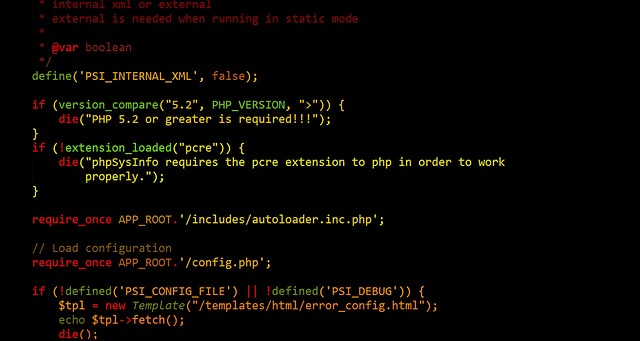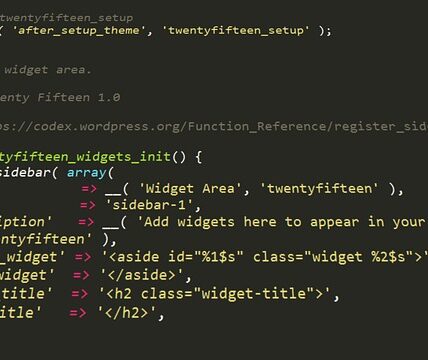Many developers often wonder if React.js is the greatest JavaScript library ever created or if there is something else that is more effective and efficient. Is React.js the most comprehensive and user-friendly library available? Does it provide the most complete array of features for developing modern web and mobile applications? And does it provide the best performance for developers of all skill levels? These are all questions that this article will address.
In recent years, the rise of React.js has had a huge impact on web development and has become a major force in the industry. More and more businesses are opting for React.js as their choice for developing web and mobile applications because of its widespread popularity and tremendous array of features. But, despite the popularity of React.js, there is still a gap in knowledge when it comes to the best practices for using this library and the nuances of its programming model, when compared to other frameworks. This gap in knowledge coupled with the complexity of the library can be a challenge for less experienced developers, who must balance the pros and cons of the library against other available options.
In this article, you will learn about the advantages and disadvantages of React.js and become familiar with its core concepts such as components, state, and virtual DOM. The article also offers insight into how to maximize the library’s potential in terms of performance, scalability, and ease-of-use. We will also explore some of the more advanced features of the library, such as React Native, and discuss how this library can help developers to create responsive and mobile-friendly applications.
Finally, the article will outline the best strategies for implementing React.js in a production environment, focusing on the importance of a comprehensive feature set, the capabilities of different libraries, and the overall complexity of the library. Ultimately, we will discuss the pros and cons of React.js from a developer’s perspective and use examples to illustrate how to make the best use of this library.
Definitions of React.js
React.js is a JavaScript library created by Facebook and used for building user interfaces (UI). It is often used for creating single-page applications (SPAs) and mobile applications. React.js utilizes a declarative approach of coding in order to simplify the development process while making components easier to maintain. The main goal behind React.js is to simplify the process of creating and maintaining UI components.
Declarative approach is one that describes what should be done, instead of how to do it. This makes code much easier to read and understand. In the case of React.js, this means that instead of writing lines of code to define how the UI is going to be rendered, developers are able to define what should be rendered, and leave it to React.js to figure out the rest.
Components are the building blocks of React.js. Components are small blocks of code that are used to create user interfaces, and can be reused across the codebase. This makes it quicker and easier to develop, and makes it much easier to maintain code in the long-term.
Single-page applications (SPAs) are web applications designed to be accessed via a single URL. All the code for an SPA is stored within a single web page, which loads quickly, making them the ideal choice for creating a responsive UI.
Mobile applications are applications designed to be used on mobile devices, like smartphones and tablets. React.js can be used to create mobile applications that are responsive and performant.
React.js is a powerful JavaScript library that is used to create responsive and maintainable user interfaces, but is also capable of creating SPAs and mobile applications. By using a declarative approach, React.js is able to take a lot of the complexity out of code development, while still allowing for flexibility. This makes React.js an ideal choice when creating user interfaces.
The Advantages of React.js
What is React.js?
React.js is an open-source JavaScript library used for creating user interfaces. Its declarative nature and easy to understand syntax makes it one of the most popularly used libraries among developers across the world. It was developed by Facebook and is used for developing web and mobile applications. React.js was designed to make it easier for developers to create user interfaces, such as interactive web and mobile applications.
Advantages of React.js
When compared to other JavaScript frameworks, React.js stands out with its numerous benefits for developers. Some of its most notable advantages include:
- React.js is an excellent choice for developing complex applications. Its declarative nature and easy to use syntax allows developers to quickly understand and create their applications with ease.
- React.js applications are written in JavaScript, allowing developers to reuse existing code when developing applications.
- React.js is a highly performant library. Its virtual DOM allows developers to create applications that are more efficient and faster on the user’s end.
- The library is kept up to date with regular updates, ensuring developers are always able to take advantage of the latest features.
- React.js is supported by a large community of developers, making it easy for developers to get assistance with their applications.
Furthermore, React.js allows developers to create a highly responsive user interface. By using the React.js component-based architecture, developers are able to create applications that automatically update when the user interacts with them. This ability to create highly responsive applications makes React.js an ideal choice for modern web applications.
Finally, React.js is also highly scalable. Its component-based architecture makes it easy for developers to expand their applications and add new features. Furthermore, the library supports both server-side and client-side rendering, allowing developers to take advantage of the best of both worlds when building an application.
Overall, React.js is an excellent library to use when developing web or mobile applications. Its easy to use syntax, scalability, and the ability to create highly responsive applications make React.js one of the best JavaScript libraries on the market.
Exploring Alternatives to React.js
Exploring Alternatives to React.js
React.js has become one of the most popular JavaScript libraries for developing interactive websites, web applications, and mobile applications. However, React.js is not the only tool graphic designers, developers, and entrepreneurs can use to create impressive web solutions. There are a lot of great options available for developing robust websites and applications, and in this article, we will provide a brief introduction to some of them.
Vue.js
Vue.js is an open source JavaScript library that was created in 2014 in response to the increasing popularity of React.js. It was designed to make developing websites and applications quicker and easier and offers many of the same features as other frameworks. For instance, it consists of components which are stored in isolated blocks of code, making it easy to find and edit single parts of the proposed project. It is also quite lightweight and uncomplicated, meaning that developers can deliver projects in a shorter space of time.
Angular.js
Angular.js is a powerful JavaScript library created by Google with the goal of making it easier for developers to create interactive web solutions. Angular.js allows for the creation of Single Page Applications, and it also features two-way data-binding capabilities. This means that data changes in the app are able to automatically update the UI of the page. Despite its complexity, Angular.js is a great tool for developers looking to create dynamic user interfaces.
jQuery
jQuery is a JavaScript library created to simplify HTML document traversing,animation, Ajax interactions, event handling, and many more. It is one of the most popular libraries in the web and it’s the technology most frequently used for creating responsive designs. jQuery is widely used both in web and mobile applications due to its sophisticated workflow and interface. Its basic features are available out of the box and the library can be easily extended, making it an effective and accessible tool for developers.
In conclusion, there are plenty of great solutions for creating interactive websites and applications, and React.js is just one of them. While React.js has proven to be an effective and effective technology for creating complex web solutions, there are also several alternatives that developers can use to achieve similar results. In particular, these include Vue.js, Angular.js, and jQuery. All of these libraries offer powerful features that can help developers to create effective web solutions.
What Makes React.js One of the Best Libraries?
What Makes React.js One of the Best Libraries?
React.js is one of the most popular JavaScript libraries used in web development today. It is used to create user interfaces that are interactive, responsive and fast-loading. React.js is highly versatile, allowing developers to create dynamic user interfaces for websites and applications. It is designed for complex applications with heavy user interaction, and it is suitable for both large and small projects.
Flexible and Compatible
React.js is a versatile tool, as it is able to work with different coding languages and libraries. This makes it a great choice for developers, as they can quickly and easily incorporate complex functionality into their applications. React.js also offers a component-based architecture, which allows developers to reuse components and code throughout their projects. This makes it easier and faster for them to develop applications with consistent functionality and structure.
Easy Learning Curve
React.js has an easy learning curve, meaning it can be quickly adopted and mastered by developers of all levels. React.js is well-documented and there are plenty of online resources to help you get up to speed. Additionally, React.js includes in-depth tutorials designed to help developers get started with the framework. The tutorials cover topics such as components, events, state, and data manipulation.
Finally, React.js can be easily integrated into existing projects and frameworks. This means that you can quickly add complex functionality and interaction to your project without having to completely redevelop the code from scratch. React.js is also backward compatible, meaning that new updates will not disrupt any of the functionality of existing code.
Overall, React.js is an excellent choice for developers to create interactive, user-friendly applications. It is highly versatile, easy to learn, and can quickly be incorporated into existing projects. This makes React.js one of the best JavaScript libraries available for web development.
Conclusion
The debate about react.js being the best JavaScript library ever created has been going on for many years. JavaScript developers have strong opinions about this powerful library and it is a continuous conversation in the community. But the question that arises is, is it really the best JavaScript library out there?
There is no certain answer to this question, but one thing is for sure – react.js does provide powerful features, and it is constantly being updated to make sure that it keeps up with the modern development trends. As such, more and more people are leaning towards utilizing it in their projects. If you’d like to learn more about this amazing library – its features, usage, best practices, and more – be sure to follow our blog. We will continuously update you with the latest releases and features, so you don’t miss out on anything.
In order to help you make an informed decision about this library, here is a FAQ section with some of the most commonly asked questions:
What advantages does react.js provide? React.js was designed with the idea of providing an easy and effective solution for developing reactive user interfaces. It offers strong performance, fast rendering times, improved scalability, as well as great readability and writability of your code.
What is the difference between React and React Native? React is a JavaScript library that focuses on building user interfaces. React Native, on the other hand, is a JavaScript framework (built with React) used for developing apps and other mobile-friendly solutions.
What other libraries are compatible with React? React works with other popular libraries like Redux, React Router, React DnD, and many more.
How often is React.js updated? React.js is regularly updated, usually every 3-4 months. This way, you can make sure that your projects are always up to date with the latest development features.
Can React be used for web development? Yes, React can be used for developing websites and web applications. It is a powerful JavaScript library that allows you to build rich, interactive user interfaces. It also offers faster rendering speeds and improved scalability.




